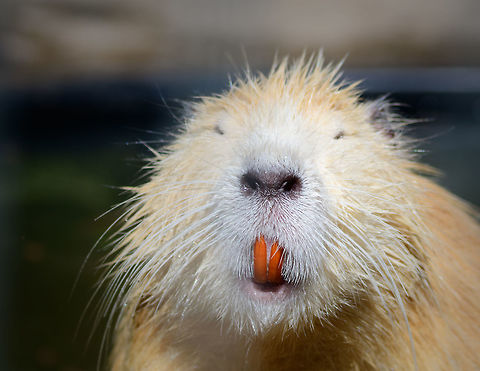
Appearance
The coypu somewhat resembles a very large rat, or a beaver with a small tail. Adults are typically 5–9 kg in weight, and 40–60 cm in body length, with a 30- to 45-cm tail.They have coarse, darkish brown outer fur with soft dense grey under fur, also called the nutria. Three distinguishing features are a white patch on the muzzle, webbed hind feet, and large, bright orange-yellow incisors. The nipples of female coypu are high on her flanks, to allow their young to feed while the female is in the water.
A coypu may be mistaken for a muskrat, another widely dispersed, semiaquatic rodent that occupies the same wetland habitats. The muskrat, however, is smaller and more tolerant of cold climates, and has a laterally flattened tail it uses to assist in swimming, whereas the tail of a coypu is round. It can also be mistaken for a small beaver, as beavers and coypus have very similar anatomies. However, beavers' tails are flat and paddle-like, as opposed to the round, rat-like tails of coypus.
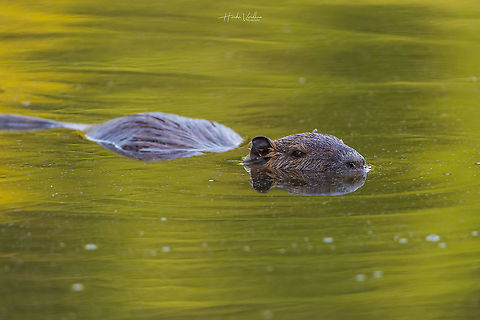
Naming
Two names are commonly used in English for ''Myocastor coypus''. The name "nutria" is generally used in North America, in Asia, and throughout countries of the former Soviet Union; however, in Spanish-speaking countries, the word "nutria" refers to the otter. To avoid this ambiguity, the name "coypu" is used in Latin America and Europe. In France, the coypu is known as a ''ragondin''. In Dutch, it is known as ''beverrat'' . In German, it is known as ''Wasserratte'' . In Italy, instead, the popular name is, as in North America and Asia, "nutria", but it is also called ''castorino'' , by which its fur is known in Italy.In Brazil the animal is known as ''ratão-do-banhado'', ''nútria'' or ''caxingui'' .
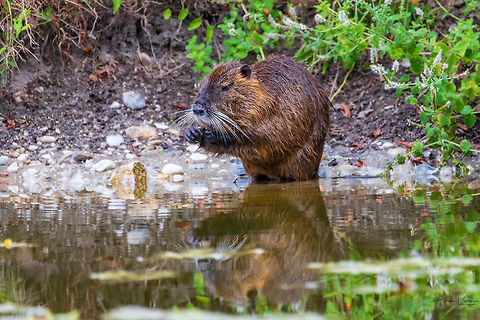
Distribution
The distribution of coypus tends to contract or expand with successive cold or mild winters. During cold winters, coypus often suffer frostbite on their tails, leading to infection or death. As a result, populations of coypus often contract and even become locally or regionally extinct as in the Scandinavian countries and such US states as Idaho, Montana, and Nebraska during the 1980s. During mild winters, their ranges tend to expand northward. For example in recent years, range expansions have been noted in Washington and Oregon, as well as Delaware.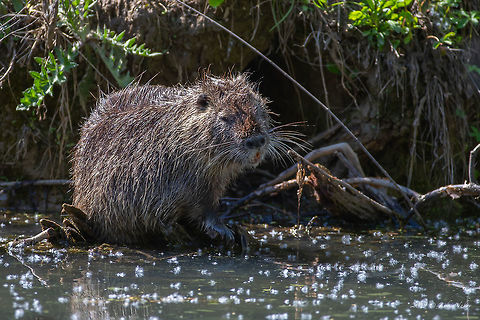
Habitat
Local extinction in their native range due to overharvesting led to the development of coypu fur farms in the late 19th and early 20th centuries. The first farms were in Argentina and then later in Europe, North America, and Asia. These farms have generally not been successful long-term investments, and farmed coypu often are released or escape as operations become unprofitable.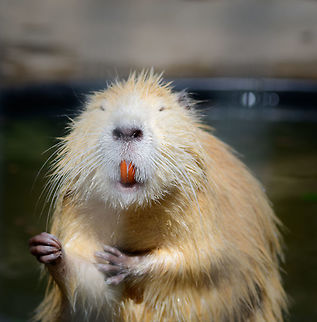
Evolution
Coypus can live up to six years in captivity, but individuals uncommonly live past three years old; according to one study, 80% of coypus die within the first year, and less than 15% of a wild population is over three years old. Male coypus reach sexual maturity as early as four months, and females as early as three months; however, both can have a prolonged adolescence, up to the age of 9 months.Once a female is pregnant, gestation lasts 130 days, and she may give birth to as few as one or as many as 13 offspring. Baby coypus are born fully furred and with open eyes; they can eat vegetation with their parents within hours of birth. A female coypu can become pregnant again the day after she gives birth to her young. If timed properly, a female can become pregnant three times within a year. Newborn coypus nurse for seven to eight weeks, after which they leave their mothers.
Besides breeding quickly, each coypu consumes large amounts of vegetation. An individual consumes about 25% of its body weight daily, and feeds year-round. Being one of the world's larger extant rodents, a mature, healthy coypu averages 5.4 kg in weight, but they can reach as much as 10 kg. They eat the base of the above-ground stems of plants, and often will dig through the organic soil for roots and rhizomes to eat. Their creation of "eat-outs", areas where a majority of the above- and below-ground biomass has been removed, produces patches in the environment, which in turn disrupts the habitat for other animals and humans dependent on marshes.
Coypus are found most commonly in freshwater marshes, but also inhabit brackish marshes and rarely salt marshes.
References:
Some text fragments are auto parsed from Wikipedia.